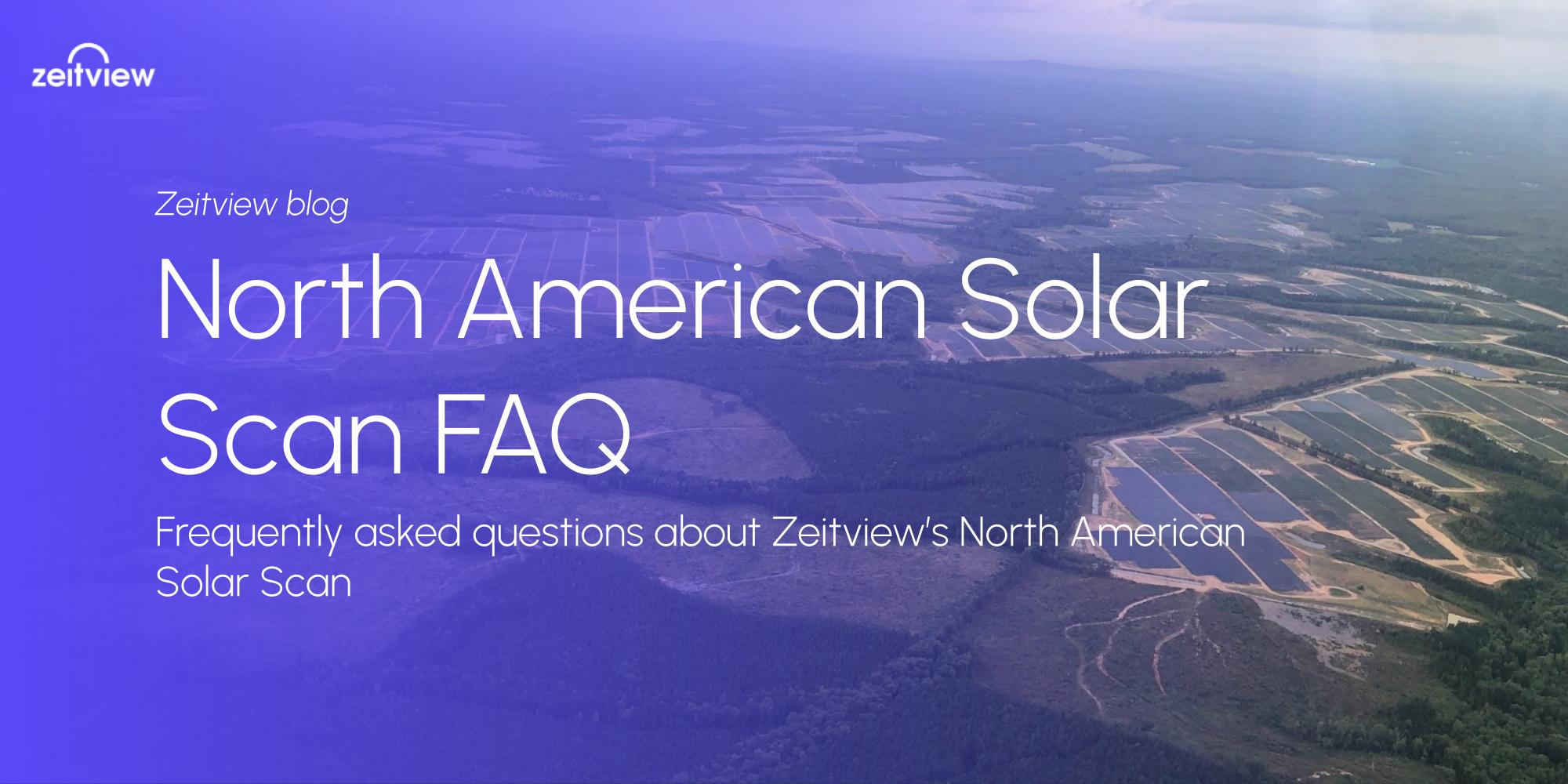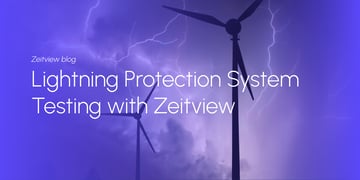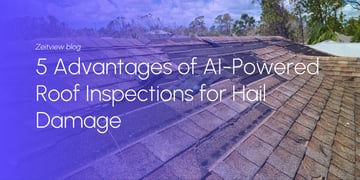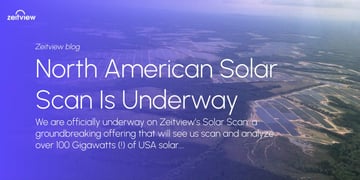Q: What is North American Solar Scan ‘23
A: North American Solar Scan ‘23 is the latest version of the solar scan which we started in ‘22, and is more comprehensive and provides greater insights into the overall condition of the North American Solar fleet.
Q: As an Asset Manager or O&M Manager how can I take advantage of North American Solar Scan ‘23?
A: Today, most users of thermal scan data order comprehensive scans of their facilities that go into great detail about the state of their assets; string outages, hot cells, diode failures, combiner box or harness failures, inverter outages, etc. While this data is extremely useful as a troubleshooting tool, for many plants it’s not necessary. Over the last 5 years of providing comprehensive analysis scans around the globe, we’ve found that in many clients' portfolios, anywhere from 30 - 70% of the portfolio is in excellent operating condition. For these clients, the comprehensive analysis literally reveals no significant issues or problems that need to be addressed. For virtually all clients, a better approach is to order a Solar Asset Rating report; this report rates power plants from AAA to DDD, much like a bond. For AAA-rated assets, there really is no need to incur the costs of a comprehensive analysis, because there are no material issues on the DC side of the power plant to troubleshoot. While this serves to save you money on your scanning costs, more importantly, it helps you focus your limited labor resources on the power plants that really do need your attention.
Q: Will the North American Solar Scan ‘23 scan reports be the same as your current North American Solar Scan reports?
A: In addition to the detailed reports available currently and in previous years North American Solar Scan, North American Solar Scan ‘23 will include for the first time a new set of asset status reports that provide simplified solar asset rankings - providing asset buyers, sellers, financiers, and O&M providers a standardized comparative measurement of system condition. Similar in function to an S&P or Moody’s ranking for bonds, the standardized measurement system will provide AAA, BBB, CCC or DDD ratings, indicating whether a system is in excellent shape with minimum degradation and liability risk or if an asset is distressed with major issues.
Q: What if I think my plant is performing better than the North American Solar Scan indicates?
A: The ratings provide a snapshot of a plant’s condition at a moment in time. Weather can cause inverters to be offline, causing the site to be classified at a lower rating. An O&M provider may replace faulty panels or fix string outages, restoring power production and bumping the facility up a grade or even two, depending on the scale of the impacts. It would not be out of the ordinary for sites with lower ratings to see significantly higher ratings on the next scan.
Q: What if I don’t want my asset to be scanned as part of the North American Solar Scan ‘23?
A: In North America the airspace is considered open, unencumbered legal collection space. In short, just as with satellites, data is available to collect from any FAA authorized entity flying in the airspace.
Q: How much will North American Solar Scan ‘23 cost?
A: North American Solar Scan ‘23 will be sold on a subscription basis as well as per unit pricing. Final pricing has not yet been set but it will be consistent with Zeitview's current pricing approach - the highest value for the money in the entire industry and in-line with the market dynamics that appeal to a very broad set of the market.
Q: Why did Zeitview develop a solar scan rating system?
A: All those with an interest in the sound growth and integrity of solar energy infrastructure are eager for accountability. Until now, there has been no transparency regarding the condition or performance of commercial and utility-scale solar plants in the U.S. Even high-pollution power plants have standardized assessments, many of which are publicly available. The new investment spurred on by the Solar Energy Manufacturing for America Act (part of the Inflation Reduction Act of 2022) will drive massive public investment to solar energy — which is great news. It’s crucial to provide visibility into best practices and highest-performing equipment so investment pays off—and countries meet their climate goals. By developing the world’s first independent system to assess solar power plant condition, we will support responsible decision-making on facility acquisitions and equipment purchases, regulatory oversight, and transparency in an industry poised for supercharged growth.
Q: How accurate is the analysis of the data behind the ratings?
A: Ratings are based on our in-house expertise of analysis on the largest raw dataset of solar power plants in the U.S. and Asia. This information is integrated with other industry-leading datasets, providing the most complete set of data ever compiled on solar energy facility health.
It’s nearly impossible to analyze aerial data at this scale without artificial intelligence trained to detect the specific defects common to PV equipment. AI minimizes the chance of error from using manual methods alone. Our team has spent hundreds of hours manually reviewing and incorporating past datasets to ensure the models developed were trained on precise and accurate datasets including field verified datasets. All derived conclusions are overseen by data and solar industry experts who understand best practices for data handling and PV technology. These results for the operating rating in the asset reports have been compared against our full comprehensive scans of the same site to check for accuracy against observed degradation and are routinely within one to two tenths of a percentage. There should be some expected difference between observed losses from comprehensive analysis versus the asset rating reports. These differences are due to the additional anomalies that affect power production, but don’t fully prevent modules from generating power. Our hot spot analysis accuracy is directly tied to the accuracy of our sensors as described in our white paper.
Q: What are similar rating systems?
A: Moody’s Investors Services provides a credit rating system with multiple categories that evaluates the likelihood of default on debt for everything from countries to corporate bonds. The ratings show relative credit risks of financial obligations issued by many types of financial institutions and of other financial products in an easy-to-understand way.
ENERGY STAR Portfolio Manager scores commercial buildings based on energy performance. The tool measures and tracks the energy, water, and waste and materials of hundreds of thousands of commercial properties, comprising nearly 27 billion square feet of floorspace. The tool calculates a 1–100 ENERGY STAR score for eligible buildings, which has become an industry standard for rating a facility’s energy performance. EPA’s ENERGY STAR tools for industrial plants include industry-specific Energy Performance Indicators (EPIs), providing information necessary for investment decisions.
LEED (Leadership in Energy and Environmental Design) applies certifications and ratings to buildings of all types, with a goal of promoting human wellbeing, environmental efficiency, and waste reduction. LEED is an internationally accepted standard for architects, builders, and designers.





